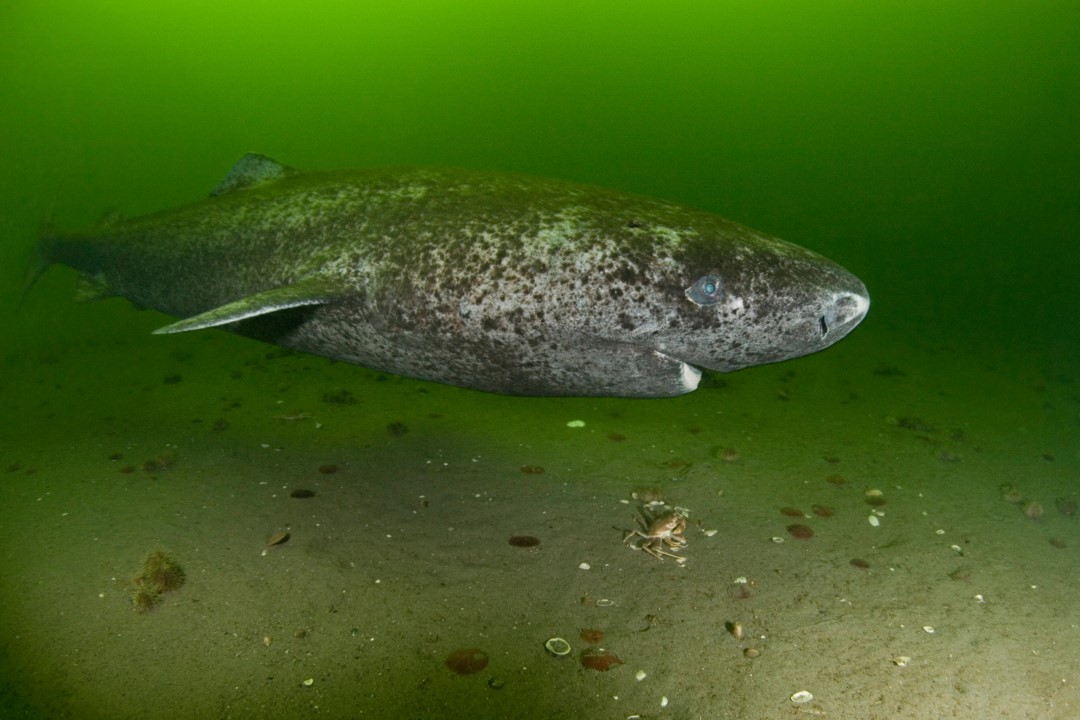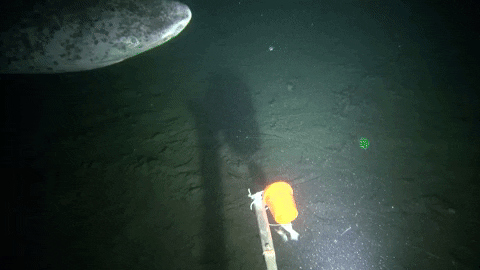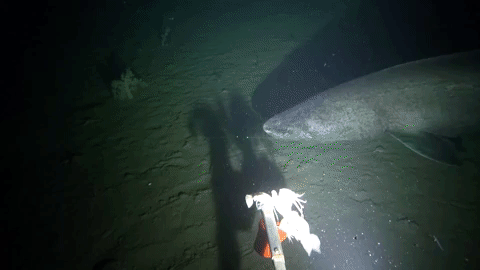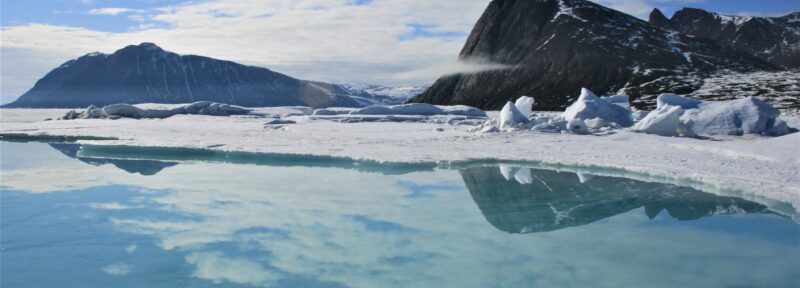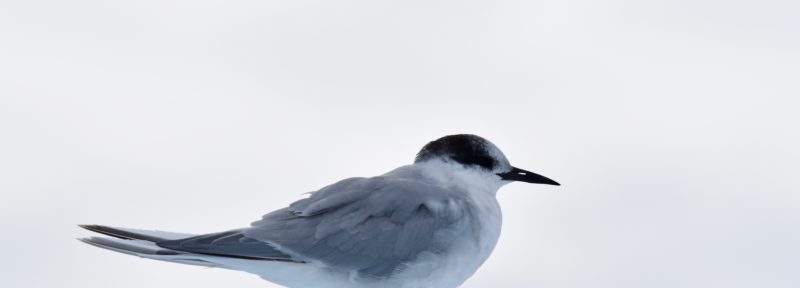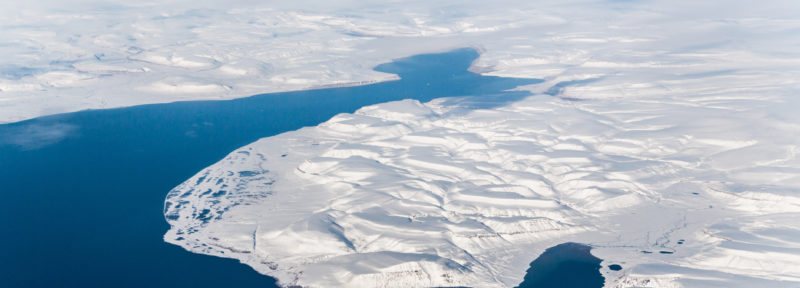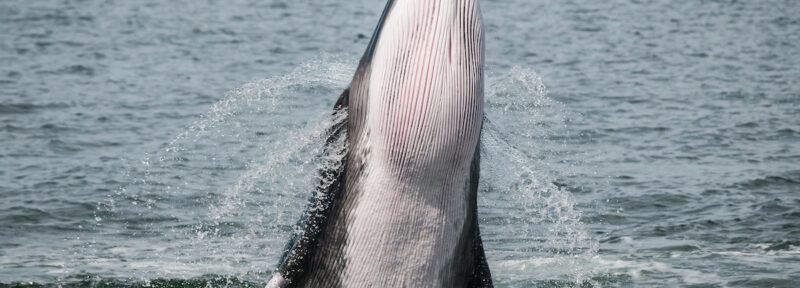What We Don’t Know about Greenland Sharks Could Hurt Them
There are fish that are older than Canada slowly swimming in the depths of the North Atlantic and Arctic Oceans.
The Greenland shark is one of seventeen species of “sleeper sharks” (Family Somniosidae), an aptly named group known for their sluggish behaviour. Scientists estimate Greenland sharks may live to be more than 270 years old, making them the longest-living vertebrate species on the planet. But despite their age, sleepy demeanour, and the eye parasites that impair their vision, Greenland sharks are top predators. They are also the largest fish in the Arctic, reaching lengths over 5 metres—longer than a large SUV.
Crédit : Brynn Devine
However, the things that make them so remarkable also put them at risk: the slow growth, late maturity, and long lifespans of Greenland sharks make them vulnerable to overfishing. And although few people want to catch a Greenland shark on purpose, they are often caught accidentally in northern fisheries. When animals are caught accidentally in fisheries, this is known as “bycatch,” and it can be a serious problem. For Greenland sharks, their slow-swimming behaviour makes it hard for them to escape nets that go along the seafloor to catch fish such as Greenland halibut. Greenland sharks are also known scavengers that, like most sharks, rely heavily on their sense of smell to locate food and are highly attracted to bait from boats using longlines or gillnets.
There are also many unknowns regarding the basic biology and ecology of the species, which makes conservation planning challenging. Their deep-water habitat in seasonally ice-covered regions makes them difficult to study. The current population size of Greenland shark is unknown, and we don’t know where the sharks mate or have their pups. Only a single confirmed observation of a pregnant female exists, so we also do not know with certainty how many pups each female produces and how often these sharks reproduce. All these unknowns combined make it exceedingly difficult to determine how at-risk the species is to overfishing.
The number of Greenland sharks in Canada caught as bycatch each year has only recently been recorded by at-sea fisheries observers. While these numbers are not publicly available, it is estimated over 1000 sharks may be caught annually in the Canadian Arctic alone. Greenland sharks in Canada are required to be discarded alive, but the survival rate of these discarded sharks is also currently unknown.
In 2020, scientists used historic landings (in the past, Greenland sharks were fished extensively for their liver oil) and present-day catch records to estimate how Greenland shark abundance has changed over time. It was suggested that Greenland shark abundance has declined between 11.7 per cent to 72.9 per cent over the past 450 years, causing the International Union for Conservation of Nature (IUCN) to move Greenland sharks from “Near Threatened” to “Vulnerable,” which reflects a higher level of risk. The wide range in decline estimates is due to a lack of data, which makes it hard to calculate accurate population growth rates and results in a high level of uncertainty about the abundance of sharks and how their numbers are changing over time.
Even though Greenland sharks are commonly caught in Canadian waters, it was only last year that they were selected to be assessed for conservation risk by the national Committee on the Status of Endangered Wildlife in Canada (COSEWIC). The assessment is currently underway, but similar to the IUCN assessment, the many data gaps are a challenge for this poorly understood species.
Crédit : Brynn Devine
However, there is some good news on the horizon for Greenland sharks. The fishing industry has partnered with researchers to tackle many of these problematic data gaps, which should help us manage the risks better. In 2019, the Greenland halibut fisheries off eastern Canada were certified by the Marine Stewardship Council; as part of the certification, the industry must try to answer questions relating to Greenland shark bycatch. Through these efforts, industry is taking steps to determine how many sharks survive after they are released, exploring ways to reduce bycatch, and is even trying to address the big question of how many Greenland sharks there are.
With these research initiatives in place, we will hopefully soon be able to fill in the data gaps for Greenland sharks. Until then, the lack of data should not preclude a precautionary management approach to ensure that these slow, long-lived creatures continue to thrive in the centuries to come.
Brynn Devine is Oceans North’s Arctic fisheries advisor.

